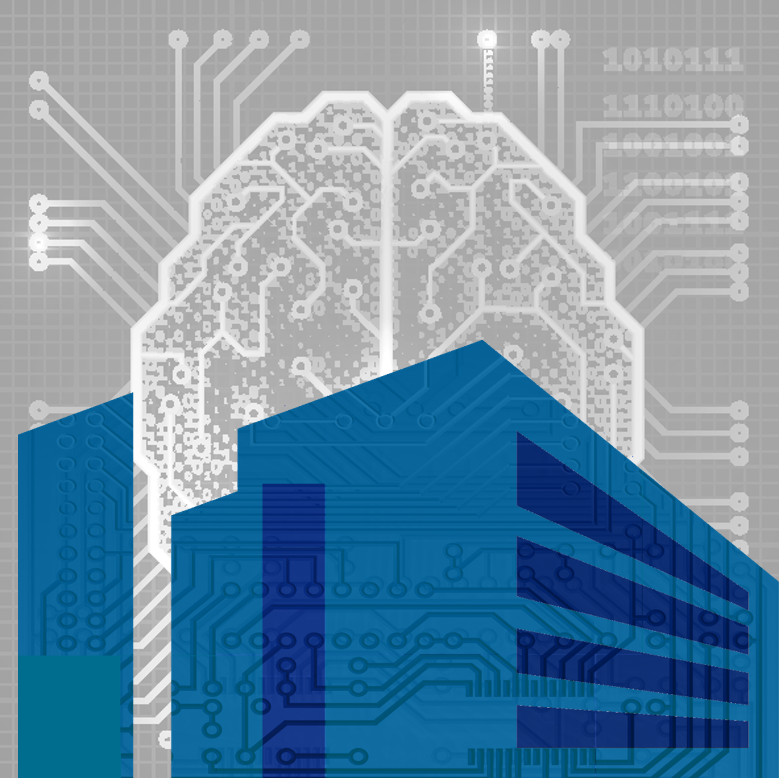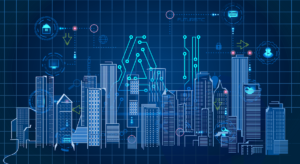We live in the digital age. The World Economic Forum has declared data is a resource as valuable as oil. We have watched the rise of digital enterprises (i.e., enterprises whose very existence was impossible until the Internet matured). Today most analysts agree that organizations created in the industrial age need to undergo digital transformation and become digital enterprises. Some analysts argue that going digital won’t be enough. To survive, they insist, an organization must become an intelligent enterprise. “In coming years,” explain Paul J.H. Schoemaker, Founder and Executive Chairman of Decision Strategies International, and Philip E. Tetlock (@PTetlock), the Annenberg University Professor at the University of Pennsylvania, “the most intelligent organizations will need to blend technology-enabled insights with a sophisticated understanding of human judgment, reasoning, and choice. Those that do this successfully will have an advantage over their rivals.”[1]
The Rise of the Digital Enterprise
According to Schoemaker and Tetlock, “Intelligent enterprises today are being shaped by two distinct forces. The first is the growing power of computers and big data, which provide the foundation for operations research, forecasting models, and artificial intelligence (AI). The second is our growing understanding of human judgment, reasoning, and choice. Decades of research has yielded deep insights into what humans do well or poorly.” They go on to note that an enterprise truly becomes intelligent when it combines “human intelligence with technology-enabled insights to make smarter choices in the face of uncertainty and complexity.” At the First Annual Enterra Solutions® Cognitive Computing Summit held earlier this year in Napa, CA, speakers called this kind of human/machine collaboration “centaur systems.” Mark Stefik (@MarkStefik), a research fellow at PARC, explains, “The most powerful systems being developed today combine artificial and human intelligence. Such systems are called Centaurs — after the half-human, half-horse creatures of Greek mythology.”[2] He created the following chart to show why he believes centaur systems are so effective.

Schoemaker and Tetlock write, “Integrating the two streams of knowledge is not easy, but once management teams learn how to blend them, the advantages can be substantial. A company that can make the right decision three times out of five as opposed to 2.8 out of five can gain an upper hand over its competitors. Although this performance gap may seem trivial, small differences can lead to big statistical advantages over time. In tennis, for example, if a player has a 55% versus 45% edge on winning points throughout the match, he or she will have a greater than 90% chance of winning the best of three sets.” Bain analysts, Michael C. Mankins and Lori Sherer (@lorisherer) agree decision making is one of the most important aspects of any business. “The best way to understand any company’s operations,” they write, “is to view them as a series of decisions.”[3] If all of those decisions are aided and informed by cognitive computing platforms, the advantage should be obvious.
Becoming an Intelligent Enterprise
Pierre Nanterme, Chairman and CEO of Accenture, and Paul Daugherty, the company’s Chief Technology and Innovation Officer, agree that an intelligent enterprise is one empowered by human/machine collaboration. “By empowering people with more human technology, businesses will transform the relationship with them from provider to partner. Through this process, they’ll also transform internally. By helping people reach their goals, these new partnerships will help companies cement a place in the next evolution of society. … The next level of operational excellence will emerge from the latest gains in software intelligence. Business and technology leaders must now view software intelligence not as a pilot or a one-off project, but as an across-the-board functionality — one that will drive new levels of evolution and discovery, propelling innovation throughout the enterprise.”[4] Schoemaker and Tetlock offer “five strategic capabilities that intelligent enterprises can use to outsmart the competition through better judgments and wise choices.” They are:
1. Finding the strategic edge. “In assessing past organizational forecasts, home in on areas where improving subjective predictions can really move the needle. … The starting point for becoming an intelligent enterprise is learning to allocate analytical effort where it will most pay off — in other words, being strategic about which problems you decide to tackle head-on. The sweet spot for intelligent enterprises is where hard data and soft judgment can be productively combined.”
2. Running prediction tournaments. “Discover the best forecasting methods by encouraging competition, experimentation, and innovation among teams. … The idea of a prediction tournament is to incentivize participants to predict what they think will happen, translate their assessments into probabilities, and then track which predictions proved most accurate.”
3. Modeling the experts in your midst. “Identify the people internally who have demonstrated superior insights into key business areas, and leverage their wisdom using simple linear models. … This can be done using a technique known in decision-making research as bootstrapping.” Another way to think of this is capturing tribal knowledge.[5]
4. Experimenting with artificial intelligence. “Go beyond simple linear models. Use deep neural nets in limited task domains to outperform human experts. … Bootstrapping can be augmented by AI technologies that allow for more complex relationships among variables drawn from human insights or from mining big datasets.” Neural nets are not the only AI approaches that can yield positive results. Enterra® uses a combination of semantic reasoning and computational intelligence to generate insights.
5. Changing the way the organization operates. “Promote an exploratory culture that continually looks for better ways to combine the capabilities of humans and machines. … The most powerful decision-support systems are hybrids that fuse multiple technologies together. Such decision aids will become increasingly common, expanding beyond narrow applications such as sales forecasting to providing a foundation for broader [cognitive computing] systems. Over time, we expect the underlying technologies to become more and more sophisticated, eventually reaching the point where decision-support devices will be on par with, or better than, most human advisers.”
Cognitive computing platforms, like the Enterra Enterprise Cognitive System™ (ECS) — a system that can Sense, Think, Act and Learn® — will provide the foundation upon which many organizations launch their transformations. As noted above, cognitive computing platforms can aid in decision-making, act autonomously when appropriate, and prove useful across an enterprise for myriad purposes. Nanterme and Daugherty write, “At the height of sophistication, AI orchestrates. It collaborates across experiences and channels, often behind the scenes, to accomplish tasks. AI not only curates and acts based on its experiences, but also learns from interactions to help suggest and complete new tasks.”
Summary
Stefik concludes, “You can expect to see artificial intelligence systems showing up on the job to enable teams to perform better than they ever did before. You may not need to take a computer to lunch any time soon, but the odds are that many people will find themselves working closely with computers as partners on the job in the next few years.” Nanterme and Daugherty add, “As the way people interact with technology becomes a primary point of competition and distinction, the enterprise faces a new universal imperative: to add AI to enhance critical customer interactions. … This means thinking of AI as more than just a technological tool, and giving it the priority and investment that matches the role it’s about to take over within organizations — the face of the brand. … Organizations will need to develop the necessary connections between systems and interfaces, and then between different points of interaction. Robust sets of data are needed from every channel — not only to initially train the AI to interact with customers and employees, but also for it to continuously learn how those interactions should evolve over a lifetime. AI-based relationships transcend traditional transactions by building on the context of each separate interaction. That only works if the system is designed to support a long-term relationship from the start, with reinforced feedback loops at each touchpoint.” In other words, intelligent enterprises are going to embrace centaur systems that leverage human/machine collaboration.
Footnotes
[1] Paul J.H. Schoemaker and Philip E. Tetlock, “Building a More Intelligent Enterprise,” MIT Sloan Management Review, 13 March 2017.
[2] Mark Stefik, “Half-Human, Half-Computer? Meet the Modern Centaur,” PARC Blog, 25 January 2017.
[3] Michael C. Mankins and Lori Sherer, “Creating value through advanced analytics,” Bain Brief, 11 February 2015.
[4] Pierre Nanterme and Paul Daugherty, “Technology for People: The Era of the Intelligent Enterprise,” 2017.
[5] Stephen DeAngelis, “Cognitive Computing can Help Retain and Leverage Tribal Knowledge,” Enterra Insights, 29 June 2015.





